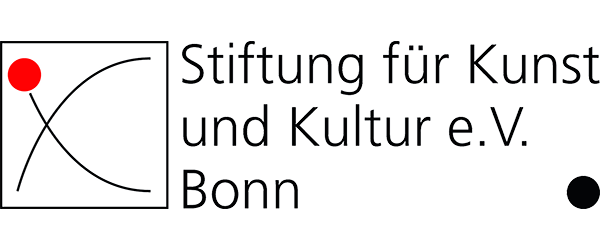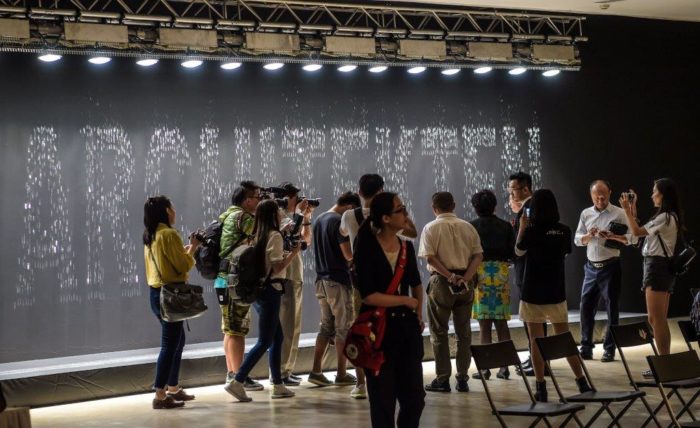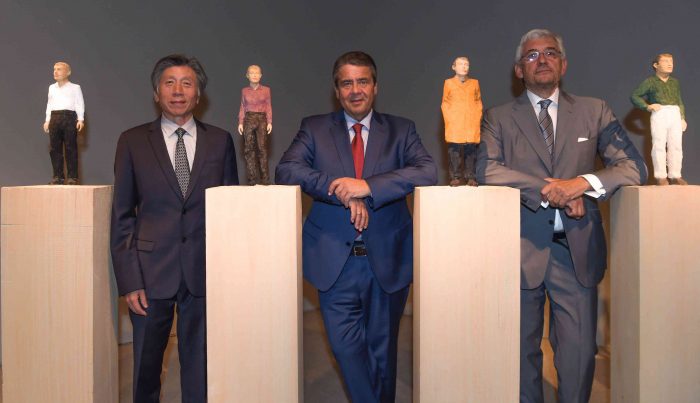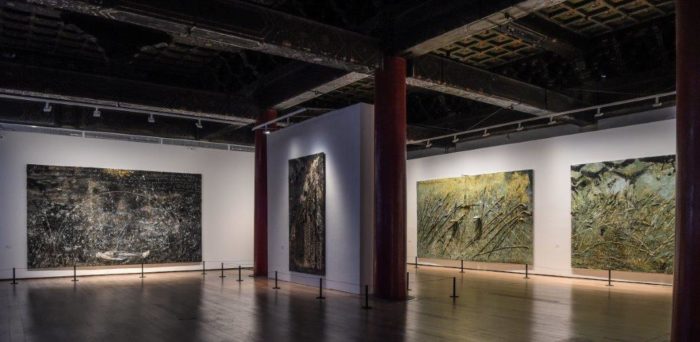Record attendances in Beijing:
Art from Germany wows Chinese audiences
The presentation of German art in Beijing attracted over half a million people in just six weeks, and generated overwhelmingly positive media coverage in both countries. Even for a city of art enthusiasts such as China’s capital, this represents a remarkable response, and testifies to the success of a transnational public-private partnership.
Foreign Minister Sigmar Gabriel and China’s Minister of Culture Luo Shugang inaugurated the exhibition on September 17 in the Imperial Ancestral Temple Taimiao in the Forbidden City, which the Chinese authorities had opened to host contemporary art from the West for the very first time. Altogether seven museums in Beijing and some 40 lenders were involved in staging this landmark project, in which some 320 works by 55 artists from across seven decades were on show.
In addition to the seven exhibitions, a symposium comprising art experts, artists and representatives from industry and politics was held to discuss the German and Chinese art scene. The versatile programme of events was augmented by numerous workshops and special guided tours. In particular, the organisers placed great importance on ensuring that “Deutschland 8” was also made accessible toyounger audiences from schools and universities.
Encouraged by the resounding success of the exhibition, the organisers, the Bonn-domiciled Foundation for Art and Culture and Beijing’s Central Academy of Fine Arts are now planning further joint projects: “The positive resonance both from the public and the media far exceeded our expectations“, concluded Walter Smerling, Chairman of the Foundation for Art and Culture. “And the keen interest among Chinese audiences across different generations has only reinforced our intention to continue this dialogue with art.”
Of the seven venues, the most popular show was held in the Taimiao Temple in the Forbidden City, featuring works by Georg Baselitz, Joseph Beuys, Günther Förg, Anselm Kiefer, Markus Lüpertz, A. R. Penck, Sigmar Polke, Neo Rauch, Gerhard Richter and Günther Uecker. The CAFA Art Museum, Red Brick Art Museum, Today Art Museum, Beijing Minsheng Art Museum, Yuan Art Museum and the Whitebox Art Center exhibited works by Franz Ackermann, Horst Antes, Stephan Balkenhol, Bernd and Hilla Becher, Peter Brüning, Abraham David Christian, Hanne Darboven, Thomas Demand, Harun Farocki, Katharina Fritsch, Isa Genzken, K.O. Götz, Gotthard Graubner, Katharina Grosse, Andreas Gursky, Gerhard Hoehme, Candida Höfer, Jörg Immendorff, Hubert Kiecol, Martin Kippenberger,Jürgen Klauke, Imi Knoebel, Uwe Kowski, Alicja Kwade, Andreas Mühe, Marcel Odenbach, Albert Oehlen, Julius Popp, Daniel Richter, Sebastian Riemer, Julian Rosefeldt, Thomas Ruff, Michael Sailstorfer, David Schnell, Bernard Schultze, Emil Schumacher, Katharina Sieverding, Andreas Slominski, Hito Steyerl, Thomas Struth, Fred Thieler, Rosemarie Trockel, Jorinde Voigt, Clemens von Wedemeyer and Matthias Weischer. Lead curators were Walter Smerling (Chairman of the Foundation for Art and Culture, Bonn) and Fan Di’an (President of the Central Academy of Fine Arts, Beijing). The curator for Media Art was Peter Weibel (Director of the ZKM Karlsruhe).
The exhibition was made possible by the principal sponsors Volkswagen Group China and Air China. “The overwhelmingly positive response to the exhibition ‘Deutschland 8’ has vividly demonstrated the keen interest in cultural exchange between the two countries. In addition to the 650,000 visitors
flocking to the museums, almost 5 million people followed the social media offerings of Volkswagen Group China online. This promotes mutual understanding and international exchange, which, as a global German company operating in China, we are strongly committed to”, remarked Dr. Jochem
Heizmann, member of Executive Board of Volkswagen AG and President and CEO of Volkswagen Group China. Air China “is also honoured to support the project ‘Deutschland 8’. Over the years the company has endeavoured to forge stronger economic and cultural ties between different countries. And in
future Air China will continue to foster cultural exchange and facilitate the presentation of artworks from across the world to a broader public.”
Further sponsors include the Foreign Office of the Federal Republic of Germany, Allianz SE, Siemens AG, Artron Art Group, Würth Group, Huawei Technologies Co. Ltd., Rheinmetall Group, Lufthansa Group, KION Group AG und Weichai Power Co. Ltd., Fuchs Petrolub SE, Stiftung Mercator, Duisport Group and Art Home.
Klicke hier, um Ihren eigenen Text einzufügen






 English
English Deutsch
Deutsch